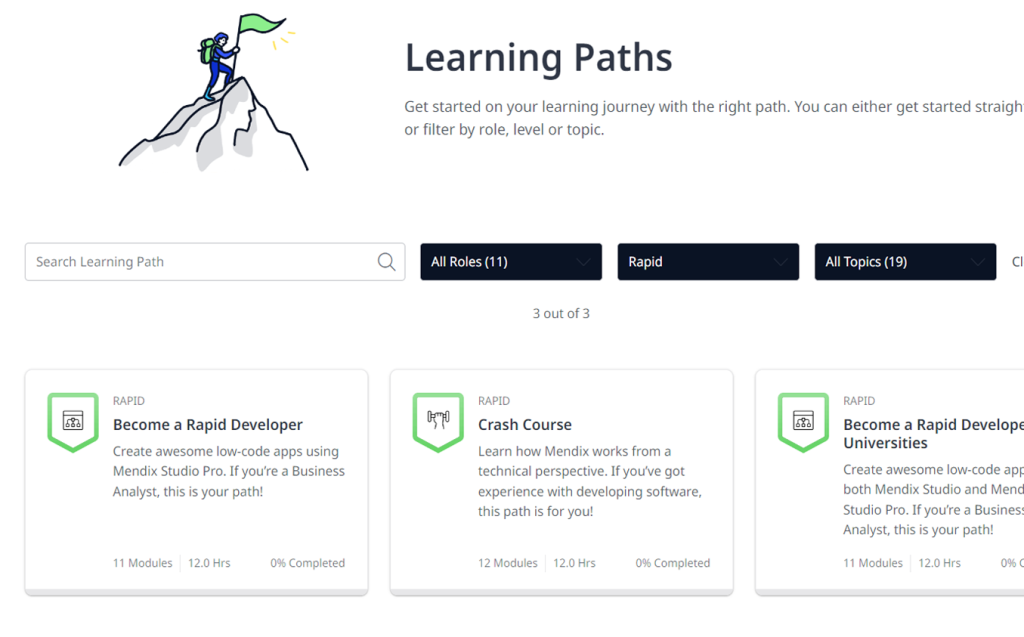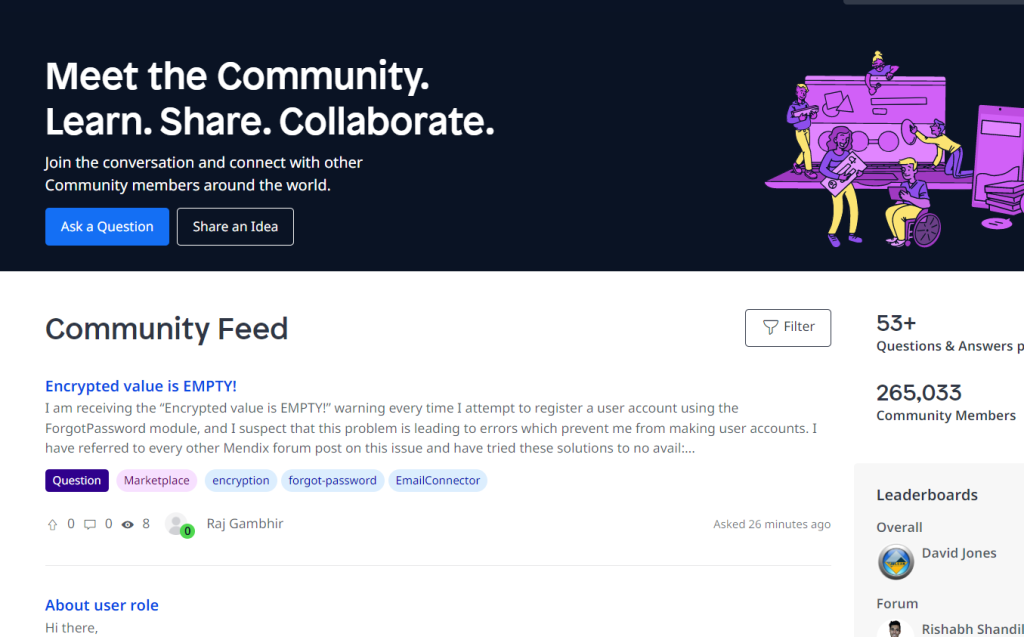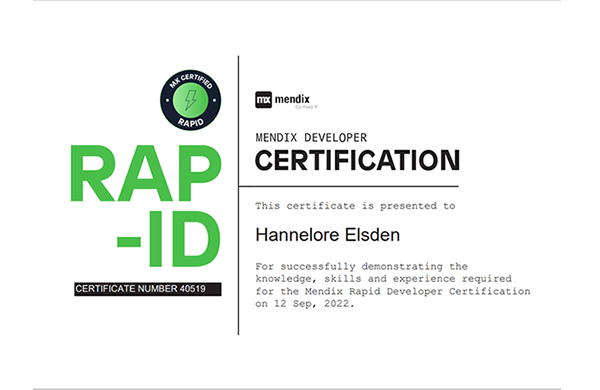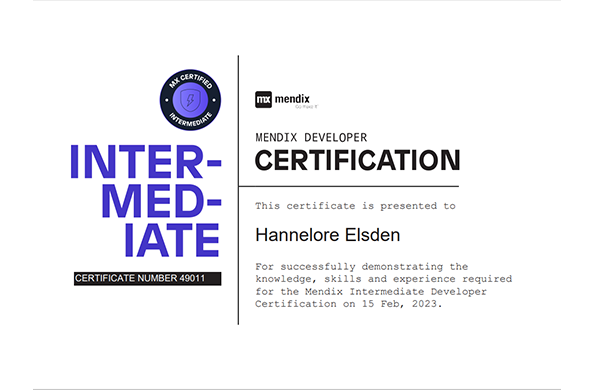AuraQ has vast experience helping organisations find the gaps that can be filled to enhance their business. This could be to improve efficiency, integrate legacy systems or deliver new portals and strategic applications to create competitive advantage. Contact us to request a free, no obligation Gap Analysis.
Kick-start your Mendix learning!
As part of my Maths course at University, I studied some modules in which we used traditional programming. With some exposure to programming languages, I had an awareness of software development, but low-code application development wasn’t something I had heard of before joining AuraQ. As AuraQ specialise in the delivery of bespoke solutions using the Mendix low-code platform, when I joined the company my first task was to understand the platform, it’s capabilities and get myself skilled up! On hearing the benefits of using visual techniques and reusable actions to develop faster, I was excited to learn more about rapid application development and I set about carving out my professional career as a low-code developer.
Mendix is widely used globally and, with more than 4000 companies and over 300,000 developers using the platform, it’s already a large and established community with a wealth of resources to help get new developers started! The nature of the Mendix platform is that it is designed to enable anyone with an idea to be able to build an app and to support this, there is an abundance of training material available. This includes sharp and focused training resources for all skill levels and an established developer certification program which provides a well-defined way in which both new and experienced users can boost their careers by validating knowledge, skill level and contributions. With all of this available at my fingertips, I was provided with a structured and intuitive way to kick-starting my learning and certification process!
The Mendix Academy
It’s probably worth noting here that I am experiencing this from the perspective of a completely new developer but training resources are available for users of all levels and roles. Mendix Academy is the hub for all of this and once signed-up, the extensive training support to upskill can be filtered by level or job function and is all available on-demand. This blog focuses on the Rapid Developer Course but training content is available for roles including citizen developers with little to no development experience, for UX designers, and of course for professional software engineers who are experienced in developing complex Mendix apps and that want to extend their skills. Across all certification levels, the Academy includes a fully integrated suite of training materials and learning paths which are tailored towards individuals. And the learning support doesn’t stop with the Academy, for me I was very lucky to be working with some of the most experienced Mendix developers in the UK but if you aren’t fortunate enough to have this kind of support on hand, there is also engagement available from the rich and vibrant Mendix community whose active members provide further support by participating and sharing their best practices.
My certification journey, like many others, started with Learning Paths. These free online Paths take you through a structured process which includes key lessons relating to the basics of developing applications with Mendix. The Paths really ramp up your learning and take you from different starting points, levels, and roles to new stages of Mendix knowledge. The Paths are split between certification levels which currently include Basic, Rapid, Intermediate, Advanced and Expert and each Path is broken down into modules. The Paths cover topics from the basics of the platform such as setting up your projects and using SCRUM through to creating applications with pages, microflows and data layers, deployment and data import. You can see examples of the Learning Paths below as well as the Forum homepage below:
Breaking down the learning
For the Rapid Certification there are 12 modules in total, each taking around thirty minutes to complete. The Paths contain content including videos, examples and practical walk-throughs where you apply the concepts you’re learning about in Mendix Studio and Mendix Studio Pro. Some of the modules covered in the ‘Become a Rapid Developer’ include:
- Collaborating with your Team
- Start Building your App
- Add Data to your App
- Add Custom Logic to your App
- From Mendix Studio to Mendix Studio Pro
- Automating Processes within an App
- Ensuring your Data is Valid and Consistent
- Securing your App
- Going Mobile
Naturally, different people will enjoy different parts of the learning more, for me, I particularly enjoyed learning about Agile methodology, App Security and Validation Rules. To support my knowledge further, I also continued my learning by creating my own apps in Studio and Studio Pro and found that this really secured what I’d learnt and helped me absorb much more in preparation for the certification exam. I also found the Community support a great benefit, the online Mendix Forum proved really useful for any queries or questions and being surrounded by knowledgeable Mendix developers in the office was a massive bonus as they could quickly help guide me in the right direction. At the end of each module there is a knowledge check, which emulates the exam questions and helps you confirm whether you’re absorbing the smaller details in the Learning Path. I also followed the Rapid Crash Course Learning Path to ensure I hadn’t missed any information.
In addition to the Paths, there is also the useful Mendix Doc site where you can browse all of the documentation related to the Mendix Platform. Here you can find release notes, how-tos, reference guide material, API and SDK documentation, and content on all the other components of the platform.
Sitting the exam and continuing my Mendix journey
The Rapid certification proves that your knowledge level is high enough to join a Mendix development team and demonstrates that you understand the fundamentals of the Mendix Platform and how, when, and where to use them. The Learning Paths had prepared me well for the Rapid Developer Certification and the process was very quick – in a few days I had covered all of the Basic and Rapid Learning Paths and taken and passed the online exam with a pass rate of 100%. The Rapid exam consists of 50 Multiple Choice Questions with a 75% pass mark. You have as much time as you need to complete the exam but you must achieve at least 40% in each category. It’s estimated to take 60 minutes to complete if you do it in one sitting. The categories in the exam are based on the modules in the ‘Become a Rapid Developer’ Learning Path.
Once you gain your Certification, it is added to your Mendix Community Profile for customers and other developers to see. Certifications are proof of your basic Mendix knowledge, demonstrating that you have the skills to join a project team and independently build prototypes. For me, the Rapid Certification provided me up with a good base to progress to Intermediate level (which I’ve just recently passed!) and I’m now actively working with the team on live Proof of Concepts, applying the skills I’ve learnt in my training to real-world projects. And because the Mendix Platform provides extensive capabilities with monthly releases with new features, I never actually stop learning! It’s an exciting career path and I can’t wait to see where this takes me in the coming months and years!












